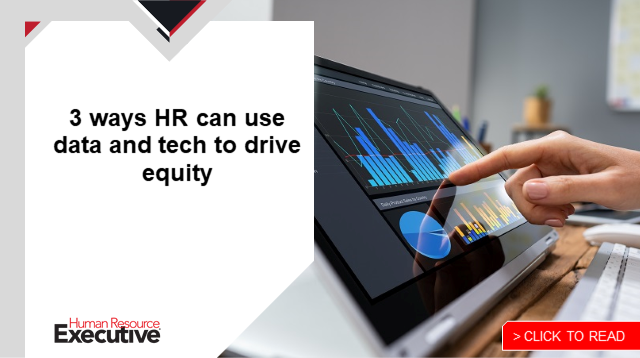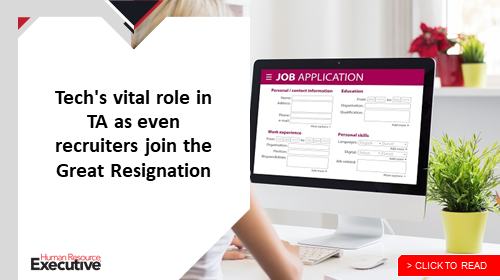Epidemiologists and virus hunters are not the only professionals who have been trawling through rivers of data searching for insights since the start of the COVID-19 crisis. Tech-savvy HR leaders at Fortune 500 companies, in particular, have been turning an eye to their copious people data to drive real transformation inside their organizations.
For some, the insights into their people data were bracing and revealed harsh truths. For others, it shone a light on ways to improve performance and outcomes.
According to Microsoft’s head of people analytics, Dawn Klinghoffer, the results of the software giant’s data analysis were not pretty, but they ultimately led the company to make significant HR changes, including its recent shift away from employee engagement toward “employee thriving.”
“We consider [employee engagement] to be a lower bar than thriving,” she says. “Thriving means being energized and empowered to do meaningful work.”
Related: People analytics and data transformation will be on the agenda at the HR Tech Conference in Las Vegas this fall, including a session from Microsoft GM Seth Patton about “The Innovation Powering the New Employee Experience.” For more on the just-released full agenda, visit hrtechconference.com/program or register here.
Along with daily pulse check-ins of 2,500 employees and long-form surveys, Microsoft began analyzing employee sentiment over its email and collaboration tools to gauge the mood of workers as the global pandemic upended daily work routines and made remote work a reality.
Klinghoffer and her team made some stark discoveries, as highlighted in her 2021 article for Harvard Business Review:
- 81% of Microsoft employees who did not receive support from management reported being dissatisfied, according to data collected between October and November 2020.
- 42% reported not feeling as productive as they were prior to the pandemic.
- Employees’ work-life balance dropped by 13% between April and November 2020.
The results were clear to Klinghoffer: Microsoft’s global employees who worked remotely were showing clear signs of burnout and productivity was taking a hit. Microsoft’s HR leaders made a connection: Employees working remotely were not taking paid time off even in the early days of the lockdown.
RELATED: 6 lessons from Microsoft’s CHRO, HRE‘s HR Executive of the Year
In response, the company instituted five wellbeing days for its global employees last year.
“We found that when people did take vacation time, they had a higher perception of their work-life balance,” she says. This meant compelling managers to take PTO so that their subordinates would feel comfortable taking time off. “We pushed the organization to say, we need managers to model taking time off, even if they’re not going anywhere.”
Klinghoffer and her team relied on a host of Microsoft tools and solutions from other vendors in order to analyze and create action plans based on its people data.
Klinghoffer’s team uses SAP SuccessFactors as its HCM along with Microsoft Power BI for data visualization of its business intelligence and Glint for its engagement survey. Although Microsoft uses Glint internally for its onboarding, exit interviews and internal mobility, Klinghoffer adds that they occasionally use survey technology from other vendors as well. Her people analytics team also relies on Microsoft Viva to gather insights into employee calendars and email metadata to link to employee survey responses in order to understand why employees might report a lower work-life balance.
 Employee calendars, for example, revealed that workers who schedule blocks of “focus time,” or uninterrupted times for concentrating on specific assignments and deadlines, had a higher perception of work-life balance. Klinghoffer suggests that these individuals were able to focus on tasks at hand and not spend inordinate amounts of time on Teams meetings.
Employee calendars, for example, revealed that workers who schedule blocks of “focus time,” or uninterrupted times for concentrating on specific assignments and deadlines, had a higher perception of work-life balance. Klinghoffer suggests that these individuals were able to focus on tasks at hand and not spend inordinate amounts of time on Teams meetings.
“They could get some real work done and not feel like they’re just constantly in this mode of collaboration,” she says.
The spreading data transformation
Microsoft is not alone in using intense data analytics to transform its people operations.
As global CHRO for Walgreens Boots Alliance, Holly May says using data is a big part of the company’s strategy overall and a specific focus within HR. Like many companies, Walgreens Boots Alliance is on what May called a data analytics journey, moving from simply having a lot of data to using people analytics to solve concrete problems and to position itself for the future.
May, who joined Walgreens in October, says WBA is using analytics in three ways right now.
Related: How Colgate, NCI and Panasonic found insights hidden in their HR data
First, across the organization: The company, which partners with Microsoft, has an enterprise-wide roadmap for how it will capitalize on analytics and “democratize data across the organization so it can be informing our strategy [and] helping use make those business decisions.” She says it’s early in the journey, “but I am very proud of how our function has embraced people analytics, how the leadership team has been embracing it and making progress on it while we’re putting that program in place.”
Second, for HR insights: The HR team compiles quarterly organizational health reports, relying on data, that provide insights into many areas, including DEI, turnover and hiring. But for May, the treasure here is in the data cuts. “Are you looking at this in terms of demographics? Are you looking at it by level? How far do you cut it so that teams have really actionable steps that they can take and insights they can glean to develop those action steps?”
WBA HR also uses data to track its work to, for example, see how incentives are influencing retention and to find labor gaps in the market. “So we’re connecting various data points to make sure the investments we make are the right ones, and the decisions we make are the right ones,” she says.
 And third, in workforce planning: Most recently, WBA has started investing in analytics around roster management and employee scorecards. “We’re optimizing organizational effectiveness to our cost profile, our investments, and it’s really helping,” she says. “It’s already making an impact. it’s helping our HR business partners and our leaders understand the impact of our decisions and trade-offs, as well.”
And third, in workforce planning: Most recently, WBA has started investing in analytics around roster management and employee scorecards. “We’re optimizing organizational effectiveness to our cost profile, our investments, and it’s really helping,” she says. “It’s already making an impact. it’s helping our HR business partners and our leaders understand the impact of our decisions and trade-offs, as well.”
Over at Morgan Stanley, the Wall Street brokerage will launch a program this year to streamline its hiring process using data analytics from Eightfold AI.
Every company and its HR team is in a war for talent, said Mandell Crawley, managing director, CHRO for Morgan Stanley at a recent Eightfold AI Cultivate ‘22 talent event that took place earlier this month.
“Recruiting is a critical vector for us. We unlocked and democratized our people analytics systems and shared the data with managers,” he said, and added, “but we have to get recruiting right.”
Ultimately, HR data transformation has inspired firms like Microsoft to move beyond employee experience and the work that they perform throughout their workday.
“It’s also the experience of the employee feeling like they’re not just a number,” Klinghoffer says, “but that their employer really cares about their wellbeing.”
To learn more about how CHROs are using data to drive HR transformation, register here for HR Tech 2022 in Las Vegas.
HRE editor Elizabeth Clarke contributed to this story.

